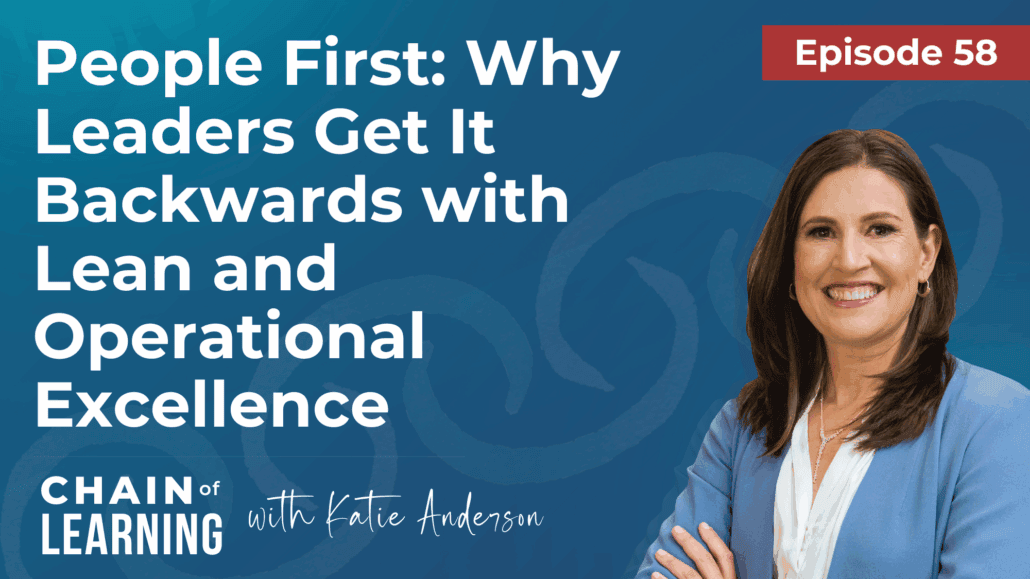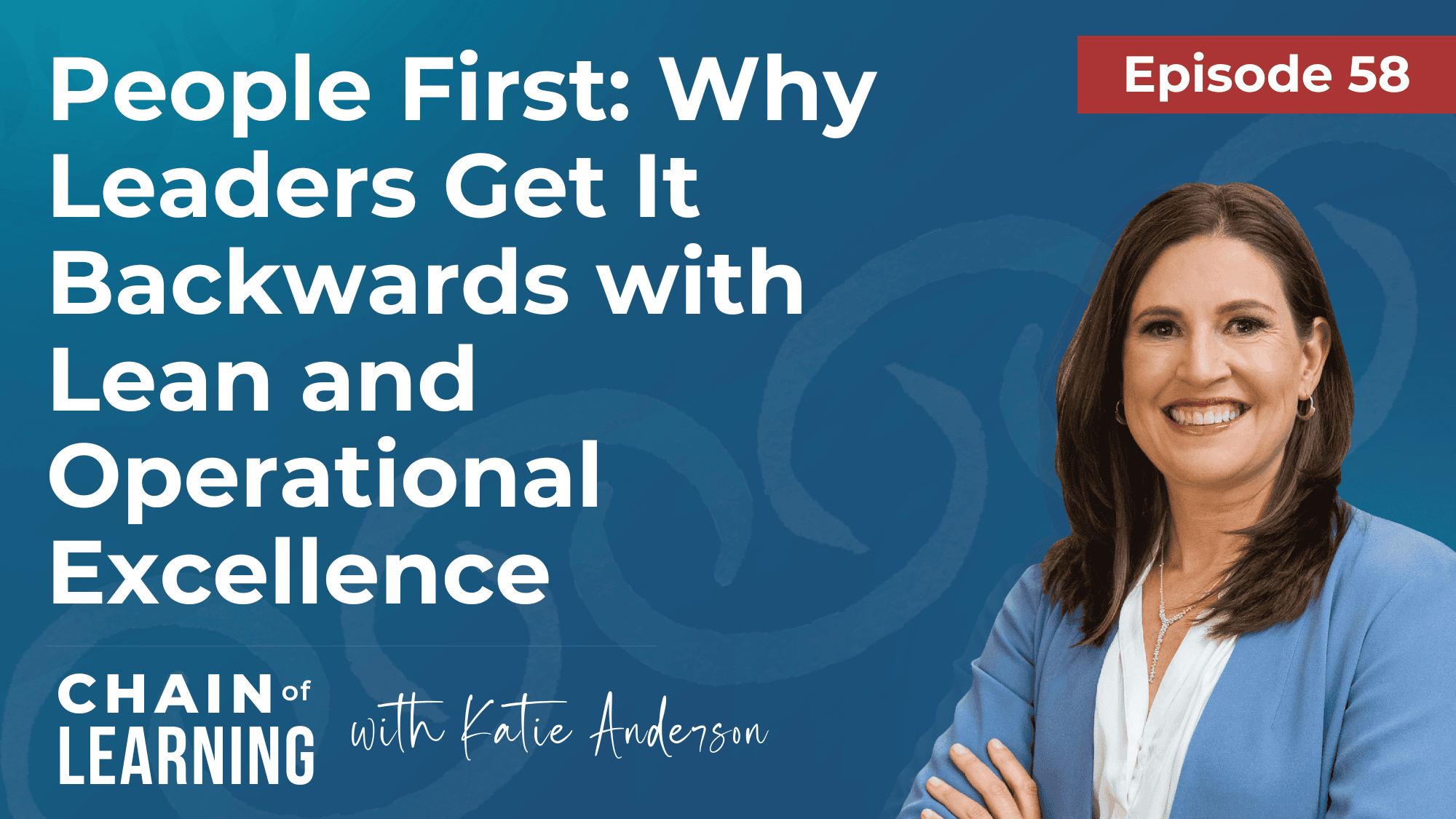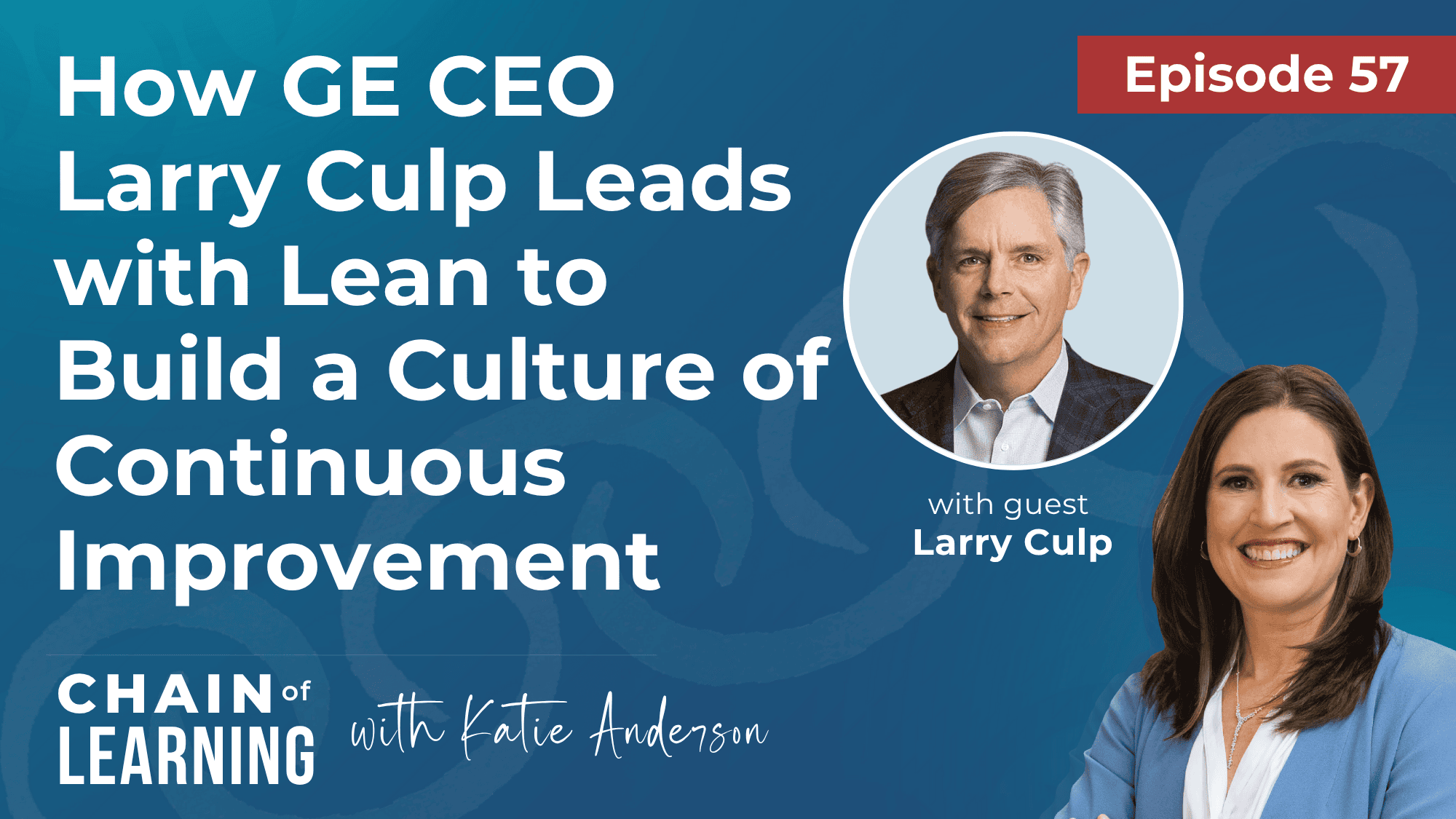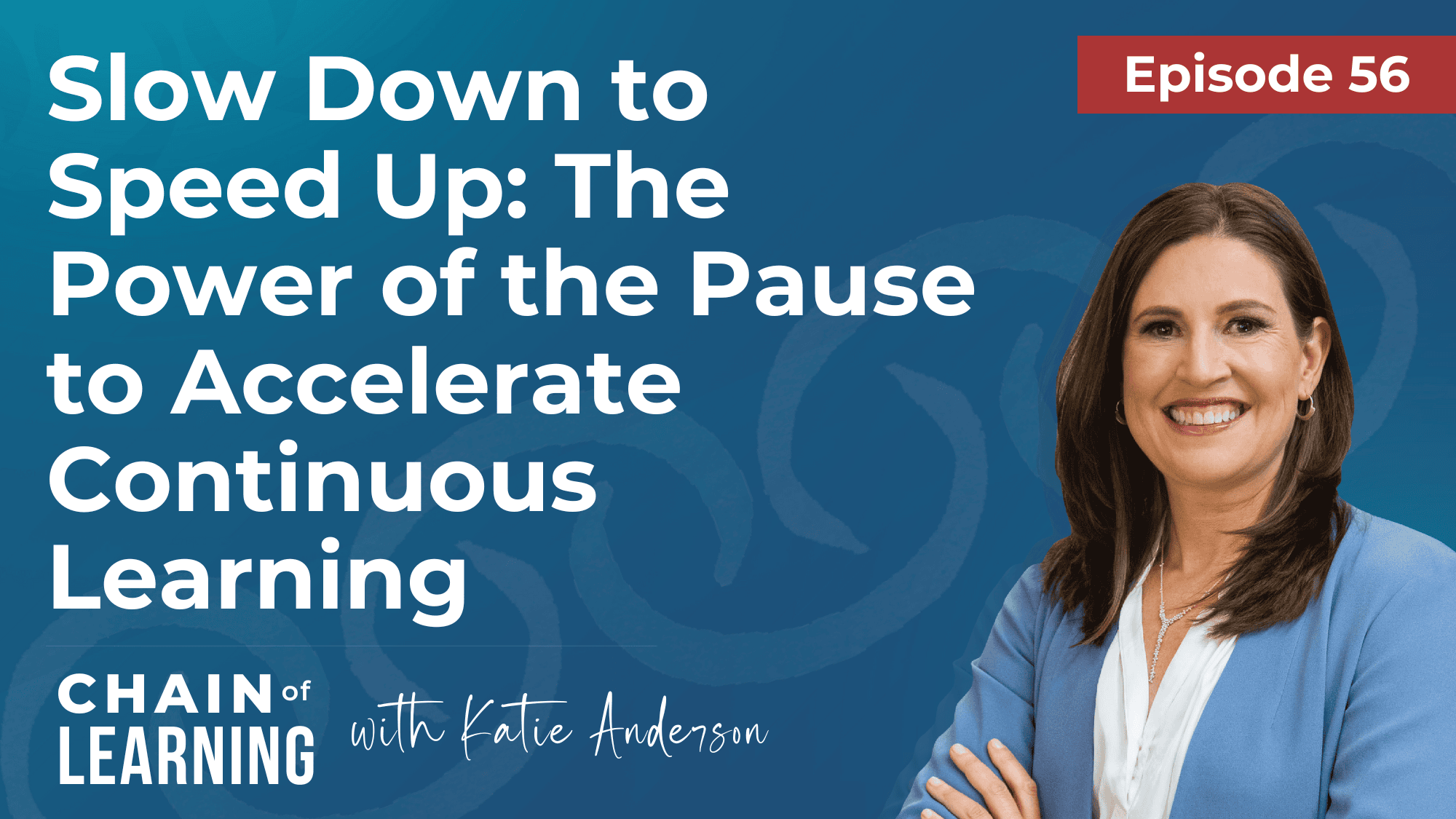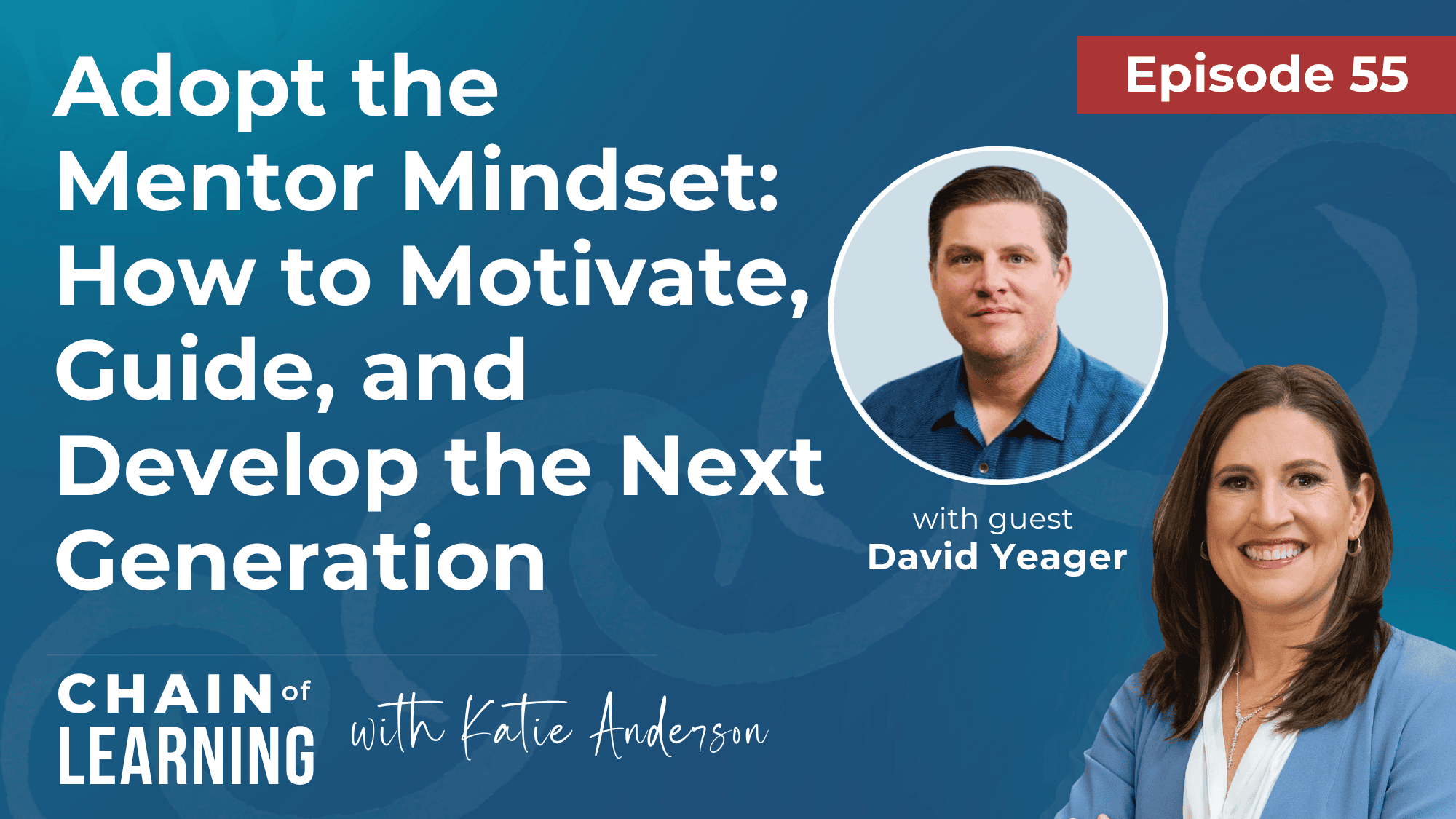Why Developing People Is the Foundation of Lasting Success
Where is your primary focus as a leader, change practitioner, or organization?
Getting business results?
Improving processes?
Or developing people?
What if the real key to lasting business success isn’t found in metrics or milestones—but in how you create a culture that nurtures people and their problem-solving capabilities?
In this episode, I explore what it really takes to deliver sustainable organizational success, and why building a people-centered learning culture—one where developing others isn’t an afterthought, but the foundation that enables operational excellence and, ultimately, better business outcomes.
Effective leadership begins when you shift from managing results to developing people—creating the conditions for continuous improvement, engagement, and growth.
When you put people first, results follow.
In this episode, you’ll learn:
✅ How Toyota’s philosophy of Monozukuri wa hitozukuri (“We make people so we can make things”) shapes a people-first culture of learning and improvement
✅ Why focusing on people → process → results (not the reverse) drives lasting impact across teams and organizations
✅ The interdependence of three qualities that support business success—quality of people development, quality of work, and quality of results—to create sustainable impact
✅ Insights from real leaders about how shifting from results-focused to people-focused leadership led to significant measurable improvement in business outcomes
✅ How to model intentional leadership practices to develop people, foster engagement, and sustain a culture of continuous learning and improvement
Listen Now to Chain of Learning!
Whether you’re a senior executive, lean practitioner, or team leader, tune in to discover how you can build an organization that learns, adapts, and thrives—today and for generations to come.
Watch the Episode
Watch the full episode on YouTube.

The Three Qualities of Lasting Business Success
During a recent Japan Leadership Experience, a Toyota executive shared that sustainable success depends on three interrelated qualities—each building upon the other like a pyramid: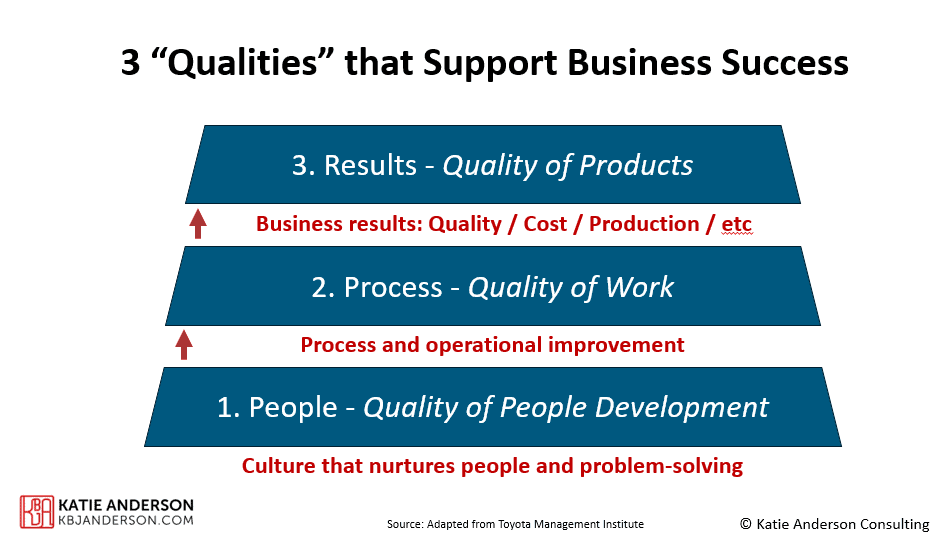
3. Quality of Results – What customers see: products, services, and key performance outcomes.
2. Quality of Work – The processes, systems, and operational improvement that make results possible.
1. Quality of People Development – The foundation beneath it all: how we nurture people, strengthen problem-solving, and cultivate learning.
Most organizations focus on the top two levels—results and processes—yet overlook the base that sustains them.
When you invest first in developing people, you strengthen the quality of work and, ultimately, the quality of results.
That’s the essence of a people-centered learning culture—and the true foundation of lasting operational excellence.
Reflect and Take Action
Are you too focused on results?
Are you centering on results like productivity and efficiency, on process improvement, or on nurturing people’s capability for learning and problem solving?
As you reflect on this episode, pause to consider where your attention really lies.
Here are a few ways to take intentional steps to put people first:
1️⃣ Notice your focus. Reflect on where your energy goes—results, process, or people.
2️⃣ Take actions to demonstrate that you value people development at the core. Have one conversation with a team member focused on learning, not just performance. Instead of asking, “What did you get done?” ask, “What did you learn?”
3️⃣ Build reflection into your routine. Schedule time to go see and ask your people:
- How well did we put people first this week?
- What’s an example of where it worked—or where it didn’t?
- What one habit could help us show that people truly come first?
Leadership with purpose begins when we shift from managing results to developing people.
How will you show, through your actions, that people are the foundation of your organization’s success?
Important Links:
- Check out my website for resources and ways to work with me
- Follow me on LinkedIn
- Learn more about my Japan Leadership Experience
- Episode 37 | Lean Has Failed (or Has It?) with James Womack
- Episode 38 | What’s the Future of Lean? with James Womack
- Episode 8 | Wiring the Winning Organization with Gene Kim and Steven Spear
- Episode 30 | Fostering Excellence Through Joy and Respect for People with Stephanie Bursek
- GE CEO Larry Culp and Katie Anderson’s Fireside Chat at AME: Lean Blog Interview with Mark Graban
- Industry Week | Serious Leaders Are Committed, Consistent and Patient
- Episode 48 | Make Leadership Meaningful: From Tools to Purposeful Impact with Josef Procházka
- Episode 25 | Get Results Through the Power of Serious Leadership with Kecia Kelly and Amy Chaumeton
Listen and Subscribe Now to Chain of Learning
Listen now on your favorite podcast players such as Apple Podcasts, Spotify, and Audible. You can also listen to the audio of this episode on YouTube.
Timestamps:
01:51 – What leadership with purpose truly means
02:06 – Why Toyota’s motto, “ The only secret to Toyota is its attitude towards learning,” is its secret to success
03:18 – Three interrelated qualities that determine lasting business success represented by a pyramid
03:45 – [Third level] Results – The outcomes customers see
04:12 – [Second level] Process – The technical and operational systems that make the work flow better
04:37 – [First level] People – The foundation that nurtures people, problem-solving, and learning
05:28 – Why the Western approach is backwards when it comes to people, processes, and results
06:50 – The meaning of the quote, “profit is excrement,” that captures the backwardness of the usual business approach to success
07:39 – The difference between lean as a transactional toolkit versus a way of nurturing people and problem solving at all levels
07:53 – Why putting people first is not just in Japan or for Toyota leaders
08:41 – Leaders who put people first as the foundation for success
10:12 – The challenge in putting people first
10:38 – An example from Gustavo of why our intentions and our actions are aligned
12:29 – Gustavo’s realization that he had a people engagement problem
13:20 – The positive results in engagement when he focused on people first
14:08 – What leadership in action looks like
14:35 – What it really means to create a chain of learning across your organization
15:00 – The two pillars of the Toyota Way
15:43 – Three questions to ask yourself as you reflect on this episode
16:26 – Questions to ask your people to create a cycle of reflection and continuous improvement
17:13 – How to build organizations and leaders that last
Full Episode Transcript
Are you and your organization really putting people first, whether you’re a leader, a change practitioner, or a team member? Today we’re exploring what it actually means to prioritize and nurture people development and why it’s the true foundation that leads to sustained success. When you put people first and engage them at problem solving at all levels, the results follow Welcome, the Chain of Learning, where the links of leadership and learning unit.
This is your connection for actionable strategies and practices to empower you to build a people-centered learning culture, get results, and expand your impact so that you and your team can leave a lasting legacy. I’m your host and fellow learning enthusiast, Katie Anderson. One of the key themes of this podcast is how to create a thriving.
People-centered learning organization, and you’re likely listening because that’s important to you and you want it woven into the fabric of your organization’s culture. We’ve talked [00:01:00] about why change initiatives fail to stick and results don’t sustain. Like in my conversations with Lean founding figure, Jim Womack back in episodes 37 and 38, or even when the tools, processes, and systems are in place.
Still don’t sustain you end up a transactional short-term process improvement, not transformational culture change, grounded in people development and empowered problem solving. What keeps showing up is the missing element, the root cause of failed culture transformations. It’s a focus on developing people and creating empowered problem solving at all levels.
So let’s talk about what it really means to lead with people first, why it matters, and some simple shifts that you can make and help your leaders make to put people in learning as the foundation. That leads to success in your organization. Leadership with Purpose connected to something more meaningful while delivering business success and creating value for customers [00:02:00] is about focusing not just on results or process, but about the quality of people development.
I always go back to the quote that I used in the opening line of my book, “Learning to Lead, Leading to Learn,” from Toyota Leader Isao Yoshino. The only secret to Toyota is its attitude towards learning, and that attitude is grounded in Toyota’s motto, Monozukuri wa hitozukuri. Or we make people so we can make things.
Throughout Toyota’s factories in Japan are signs that say, good products come from good thinking, and these aren’t just empty words on banners. This philosophy is truly the secret to Toyota’s success and the missing element that many Western organizations have overlooked in trying to bring Toyota’s system to life in their own companies.
During my Japan Leadership Experience programs, the global leaders in each cohort hear directly from Mr. Yoshino, other leaders from Toyota and its suppliers and leaders across various industries, and the message is [00:03:00] consistent. Success isn’t about the tools. It’s not about the results, it’s about people and empowering learning at all levels.
One of those Toyota leaders now, the managing director of the Toyota Management Institute, shared with me in recent Japan leadership experience participants that there are three interrelated qualities that determine lasting business success. These three qualities are like a pyramid, each stacked upon each other, and we tend to focus at the top end.
But what’s important is what is underlying. I’ve created a graphic to represent what I’m about to show you, and you can follow along or go see it in the full show notes. So at the top of this pyramid are the results. The third level of quality of business success, the quality of products. These are the typical business results in KPIs like quality, cost production.
These are the results that business leaders measure business success on and are tracking each and every day, [00:04:00] and we absolutely need and want business results for the success of the company. But what creates the business success? The quality of the products of the service is a layer underneath the second level of quality, which is the quality of the work and the processes.
And this is where we typically think of a process in operational improvements. And this tends to be what lean tools and techniques have really focused on how do we make the work flow better and more efficiently. We usually stop there though, and focus on the results and processes while neglecting the third and most important, the foundational element that.
Allows the quality of the work to happen and therefore the quality of the services and products to be delivered. And that is the first element of quality, which is about people and the quality of people development. It’s the foundation for it all. It’s about creating a culture that nurtures people problem solving [00:05:00] and learning.
So this is the foundation, and this is the secret to Toyota success. It’s an attitude towards learning based on the quality of their people development, and that is where their focus is. And when you empower people to be developed and engaged in problem solving, that results in. Improved quality of the work, which then results in the upper level of the quality of the products and services.
So it’s people, processes, and results, but we usually have it backwards. In our Western approach, we focus on the outputs, the business results, not the inputs that lead to them, the people and the learning, and then the quality of the work that results from that. It’s time to flip the script. We have to focus on building the quality of people development, of nurturing their capability to solve problems, which will then lead to the quality of the work processes, which in turn leads to the quality of the business results.
One of my favorite quotes of all time [00:06:00] comes from the book Tree Ring Management. Unfortunately, it’s out of print, although you can sometimes still find an old copy on Amazon, but the company, the author founded Ina Foods is one of the cornerstone host organizations in my Japan leadership experience in Tree Ring Management.
Mr. Tsukakoshi writes, profit is excrement. He describes profit as the natural byproduct of a healthy functioning company and Ina Foods whole purpose is about people and their happiness, and so they focus on engaging people and creating an organization where they can contribute and be happy and help make the organization a great one.
As the way to lead to company success. I shared this quote back in episode four about the importance of being overdoing, which was a quote that Mr. Tsukakoshi’s son, who hosts us on the Japan leadership experience had mentioned, and it was just such a powerful insight and rallying [00:07:00] cry for those leaders on that program.
It is such a powerful, memorable quote. Profit is excrement because it captures the backwardness of our usual business approach to success. So instead, if you focus on people and create the conditions for them to be engaged and empowered to improve work processes, their results will follow. Yet, when leaders focus only on results, they tend to get compliance.
When they focus on process, they might get short-term efficiency. But when they, and you can really focus on people and empowered learning, you create engagement, capability and continuous improvement that really lasts. And this is the difference between lean as a transactional toolkit versus a way of thinking and being nurturing people and problem solving at all levels.
And this is what leaders who really get it truly understand and putting people first is not just the Toyota thing. It’s not something that only leaders in Japan get right. In fact, there are [00:08:00] plenty of companies in Japan that do not lead with a people first attitude. And there are a lot of great leaders outside Japan who get it, who put people their joy, happiness, and learning as the essential foundation of business success.
Steve Spear and Gene Kim showed in their research of global companies that the key element driving organizational success and the difference between companies using the same improvement methods is how leaders create the social systems that enable people to thrive and contribute their thinking in the most impactful way.
And you can hear me talk with Steve and Gene about how leaders can really wire the winning organization back in episode eight, and there are so many great examples of leaders in their companies focusing on people as the foundation of success. I’m just back from some really special conferences and hearing these leaders talk about their commitment that people first is inspiring.
I’ve also heard from other leaders like Patti Poppe, who is the executive at the Energy Company, PG&E, and leads [00:09:00] with Love, which you can hear me talk about in episode two. Stephanie Bursek, an HR leader who joined my Japan leadership experience last year, who talked about an episode 30 Howard Company, is leading with joy and respect for people.
And even Larry Culp, the CEO of GE Aerospace, who talked with me on a fireside chat three years ago about how he is really focusing on people and learning as the foundation of his global. Company transformation, which you can hear on the most recent episode, as well as his Chief Transformation Officer, Phil Wickler, who talked with me about how they’re continuing to lead with an attitude towards learning and people first in the organization.
I’ll put the link to all these episodes in the show notes. So you already know this. You’re listening here to Chain of Learning because you value people and learning, and you know that when organizations invest in people where leaders teach, coach, and create the conditions for learning, our organizations [00:10:00] and our people become adaptable, innovative, and resilient.
When leaders put people first, not just saying it, but demonstrating it through their actions, things change and things sustain. So what’s the challenge? Sometimes we know we wanna put people in learning first, but our actions or the actions of our leaders aren’t actually demonstrating it. As hard as you work, and as much as you understand this, you have to really buy in, not only to the people first, mindset first.
You have to lead that way too. And when you make the real commitment through your words and where you spend your time, the results will follow. A fantastic example of this realization of sometimes the disconnect between our intentions and what we say is important and how our actions really demonstrate that, and how small powerful shifts in leadership behavior, and attention to people can make a big impact comes from Gustavo, a leader from Brazil in the mining industry, who joined [00:11:00] me on my Japan leadership experience last year.
Before joining me in Japan, Gustavo and his leaders talked about how important people were in their organization, MU in practice. He shared that leadership attention, including his own, was really on production and immediate business results. He admitted to me that process and results were his main focus as the continuous improvement change leader in his organization and.
On the immersive experience in Japan, he saw something different and deeply prevalent across our site visits, including Ina foods. He experienced what true people-centered leadership looks like. Leaders who live their purpose, their core, creating conditions where every person feels their work contributes to something meaningful.
It’s not just a concept. It’s really embodied. It’s really incredible. It’s lived through words and actions. It is not a slogan on the wall. And when he returned home, Gustavo shared with me that he realized that he and his leadership [00:12:00] team weren’t really walking the walk. They said they put people first, but it wasn’t reflected in how they talked about what was most important.
He realized that across the organization from board reports to frontline visibility boards, metrics were listed in this order, productivity, then quality, cost, sustainability, and finally fifth people. And that’s how leaders talked about performance, focusing on production timelines as the top priority. At the same time, Gustavo realized that they had an engagement problem.
They had really low people engagement scores, and he realized it was time to do something different. Gustavo influenced his leadership team to run an experiment to flip how business priorities were listed and to put their two top priorities first. So instead they flipped how the metrics were represented.
So they put people first and sustainability second, followed by quality, productivity, and cost. [00:13:00] And crucially, they started talking with people when they were going out to the floors, going to gemba about how they can improve the workplace and teamwork and engage them in problem solving. The results, the shift in listing people first and talking to people about problem solving and improving the work was dramatic.
In less than three months, engagement jumped from 63% to 83%, and productivity and quality improved. Costs went down and over the following months, engagement continued to rise, as did all the other business metrics. I highlighted this example in an Industry week article about serious leadership last year.
I’ll put the link in the show notes. And Gustavo and his boss also shared these results at the recent Lean Brazil Summit where I too highlighted the impact of this powerful example. In my talk, it’s about what happens when leaders truly put people first. As Gustavo told me, if our people feel that we care about [00:14:00] them, they deliver the results, production, quality, and cost, everything is better.
When you show that you care about people first, this is leadership with purpose In action. Really put people first, support them, and create the conditions for them to engage in problem solving and improve the quality of the work at all levels. When you put people first and nurture their development and their problem solving capability, the quality of people development, the quality of work processes will improve and so will the quality of your business results.
Leaders at great organizations understand this deeply. Good products come from good thinking and good thinking comes from people who are engaged and supported to learn. When leaders set direction, provide support and develop themselves, they create the conditions for everyone to learn and grow. This is really what I mean by leading to learn and what it means to create a Chain of Learning across our [00:15:00] organization.
And this is why Respect for People is one of the two pillars of the Toyota Way. The other being continuous improvement. It’s not just about improving processes, it’s about holding precious, what it means to be human. Today we explored the three qualities of business success. The results, the processes in the people.
It’s the quality of people development that leads to the quality of the work, which leads to the quality of the business results. Two, why people development is the true foundation of sustained improvement. And three, how leaders like Gustavo, and you are proving that when you put people first, results follow.
As you reflect on this episode, ask yourself three questions. One, where is my focus right now? Really on results such as productivity, cost efficiency, two, process or process improvement, or three people nurturing, [00:16:00] people development and their capability for problem solving. Two, what actions can I take this week to really demonstrate that I value people development at the core?
Three. How am I helping others learn, not just do and accomplish? Start small. Have one conversation with your team members focused on learning, not just performance. Instead of asking, what did you get done, ask, what did you learn? Put reflection time on your calendar. Put time to go see and ask your people.
How well did we put people first this week? What’s an example? What got in our way? This is the cycle of learning how you can create a simple cadence of reflection and continuous improvement and challenge your leaders. How can we build one new habit that proves people come first? Look at how you’re really showing up with your words and your actions, and what small shifts you can make to really demonstrate that people are the [00:17:00] foundation of your organization’s success.
Leadership with purpose starts when we shift our attention from short-term metrics to long-term, meaning from managing results to developing people. And when you lead with purpose, putting people and their learning first, you don’t just improve results. You nurture learning engagement and create long-term success.
And that’s how we build organizations and leaders that last. If you’re ready to understand what leading with a people first attitude really means, and to have some of those same aha moments as leaders like Gustavo and others who’ve joined me on past Japan leadership experiences, I invite you to join me in Japan for the next Japan leadership experience.
You’ll spend the week with me and Isao Yoshino 40 year Toyota leader now in his eighties. Immersing yourself in business and cultural learnings that will transform how you lead and the impact you create. And the transformation is real. Hear about it from executives, business leaders and consultants who’ve joined me and walked away with a real deep appreciation [00:18:00] of what people first means, and then went back and made real shifts in their organization and how they’re showing up as leaders.
Including Josef Procházka and back in episode 48, who shared how he completely shifted how he leads change with his clients in the meaningfulness of continuous improvement in Lean and doctors. Kecia Kelly and Amy Chaumeton, who back in episode 25, shared how they’ve become one. Thousand percent committed and aligned what they need to do as executives to create this people first foundation in their hospitals.
And there are so many other past episodes on Chain of Learning of leaders who have joined me and had this transformation and are creating and building this Chain of Learning focused on people first in their organization. If you’re ready to invest in your own transformation as a leader in the impact in your organizations, go to kbjanderson.com/japantrip to learn more about the program and apply today.
If this episode resonated with you, please share it with another leader who’s ready to build a [00:19:00] people-centered learning culture. And if you’d like to go deeper in your own leadership practice, check out past episodes of Chain of Learning and be sure to subscribe now on your favorite podcast channel so that you never miss a future episode.
Thanks for being a link in my chain of learning. I’ll see you next time. Have a great day.
Subscribe to Chain of Learning
Be sure to subscribe or follow Chain of Learning on your favorite podcast player so you don’t miss an episode. And share this podcast with your friends and colleagues so we can all strengthen our Chain of Learning® – together.

